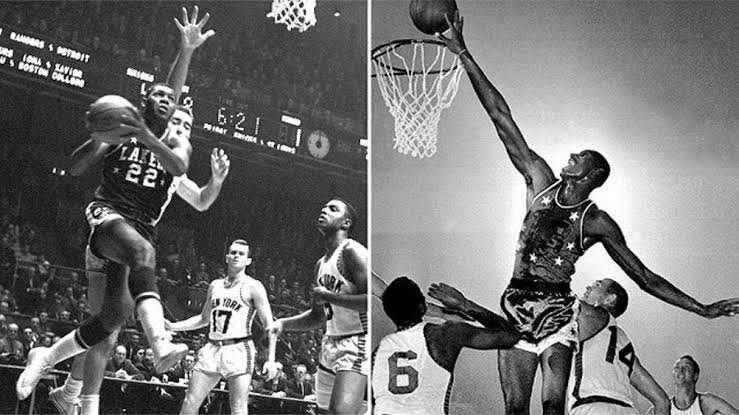Measuring Up to Wilt Chamberlain May Take More Than Stats -Wilt Chamberlain’s Untouchable Legacy: Can Anyone Ever Match His Impact?
Wilt Chamberlain’s Untouchable Legacy: Can Anyone Ever Match His Impact?
The shadow of Wilt Chamberlain looms large over the NBA. His statistical dominance, his sheer physical presence, and the stories that surround him have cemented his status as a legend, a force of nature whose impact continues to resonate decades after his retirement. The headline, “Wilt Chamberlain’s Untouchable Legacy: Can Anyone Ever Match His Impact?” isn’t just a question; it’s a challenge, a call to contemplate the very nature of greatness in basketball and its enduring legacy. While the raw numbers – the 100-point game, the scoring titles, the rebounding dominance – are staggering, the true measure of Chamberlain’s impact goes far beyond the box score. It resides in the stories, the myths, the undeniable influence he exerted on the game’s evolution and the countless players who followed in his footsteps.
**The Numerical Titans: Shattering the Records**
Let’s address the elephant in the room: the numbers. Wilt Chamberlain was, statistically, in a league of his own. His career averages are not just impressive; they’re often considered impossible in today’s NBA. The 100-point game, played against the New York Knicks on March 2, 1962, remains arguably the most iconic individual performance in basketball history. To score 100 points in a single game is an achievement that defies comprehension, especially when considering the physical demands and defensive strategies of the era. This single feat alone elevates Chamberlain to a pantheon of untouchable figures.
Beyond that, the list of his accomplishments is a litany of shattered records. He holds the NBA record for career rebounds (23,924), a mark that might never be broken. He averaged 50.4 points per game in the 1961-62 season, a feat so outlandish that it feels more like a glitch in the simulation. He led the league in scoring seven times, in rebounding eleven times, and his career averages of 30.1 points and 22.9 rebounds are simply breathtaking. These numbers are not just impressive; they force a reevaluation of what constitutes greatness. They serve as a constant reminder of the physical capabilities of a man seemingly designed for basketball.
**Beyond the Box Score: The Era and the Evolution**
However, to solely focus on the numbers is to tell an incomplete story. Chamberlain’s dominance occurred during a unique period in basketball history. The game was still evolving, the rules were different, and the style of play was considerably more physical. The lack of a three-point line, the slower pace, and the prevalence of isolation plays all contributed to his scoring and rebounding opportunities. Opponents, lacking the modern understanding of defensive schemes, often resorted to double-teaming and fouling to try and contain him.
It’s also important to understand the cultural context of his era. Chamberlain faced significant racial prejudice and societal barriers. His individual success was often viewed with suspicion and, at times, outright hostility. He was criticized for his perceived lack of team play, even when he was single-handedly carrying his team. This constant pressure, coupled with the physical demands of the game, makes his achievements all the more remarkable. He was not just a basketball player; he was a symbol, a pioneer, a man pushing the boundaries of what was considered possible.
**The Unbreakable Barrier: Impact Beyond Statistics**
The question of whether anyone can match Chamberlain’s *impact* goes far beyond simple statistics. His impact is rooted in several factors:
* **Physical Dominance:** Chamberlain possessed a combination of size, strength, and athleticism that was unprecedented. He was a giant among men, and his presence on the court instilled fear in opponents. He revolutionized the center position, paving the way for future dominant big men.
* **Pioneering Figure:** He broke racial barriers and paved the way for future generations of African-American basketball players. His success demonstrated that talent and hard work could overcome prejudice and discrimination. He was a role model and an inspiration to countless young people.
* **Enduring Myths and Stories:** The stories surrounding Chamberlain are legendary, often bordering on the mythical. His 100-point game, his alleged off-court exploits, and the sheer scale of his accomplishments have been etched into basketball folklore. These stories continue to fascinate and inspire.
* **Influence on the Game:** He fundamentally changed the way basketball was played. The rules were altered, defensive strategies evolved, and the importance of the center position was solidified, all due to the impact he made. He forced the league to adapt, a testament to his unparalleled influence.
**The Challengers: Modern Players in Comparison**
So, who comes close to matching Chamberlain’s impact? The debate will likely continue for generations, but some modern players have made compelling cases:
* **Michael Jordan:** While not a center, Jordan’s competitive drive, scoring prowess, and global impact arguably rival Chamberlain’s. His six NBA championships, his scoring titles, and his cultural influence are undeniable. He inspired a generation of players and transformed basketball into a global phenomenon.
* **LeBron James:** James’s versatility, longevity, and leadership skills are unparalleled in the modern era. He has broken numerous records, won multiple championships, and played at an elite level for over two decades. His impact on the game, both on and off the court, is undeniable.
* **Kareem Abdul-Jabbar:** Abdul-Jabbar’s longevity, scoring prowess, and defensive excellence earned him a place among the all-time greats. He remains the NBA’s all-time leading scorer, and his impact on the game is undeniable.
* **Bill Russell:** Russell’s impact on team success is unparalleled. He won 11 NBA championships, a record that may never be broken. His defensive prowess and leadership skills defined an era of Boston Celtics dominance.
However, even these giants fall short in specific areas. Jordan’s statistics don’t quite match Chamberlain’s scoring and rebounding. James has not achieved the same level of statistical dominance. Abdul-Jabbar, though statistically significant, didn’t possess the same level of athletic dominance. Russell, while his championship resume is untouchable, did not have the same individual scoring or rebounding volume.
**The Verdict: A Legacy of Influence**
The answer to the question “Can anyone ever match his impact?” is complex. Statistically, it seems nearly impossible. His numbers are so overwhelming that they seem to defy the physical limitations of the human body. However, impact transcends statistics. It encompasses a combination of physical prowess, cultural significance, and the ability to shape the evolution of the game.
While modern players may achieve their own impressive feats and carve out their own legacies, they will always be compared to Chamberlain. They will always be measured against the shadow he casts over the sport. His influence on the game, his pioneering role, and the enduring mythology surrounding him create an untouchable legacy that continues to inspire and fascinate. Perhaps, the true measure of impact isn’t just about breaking records; it’s about leaving a lasting impression, shaping the future, and becoming a legend. And in that regard, Wilt Chamberlain’s impact, remains arguably, untouchable



Post Comment